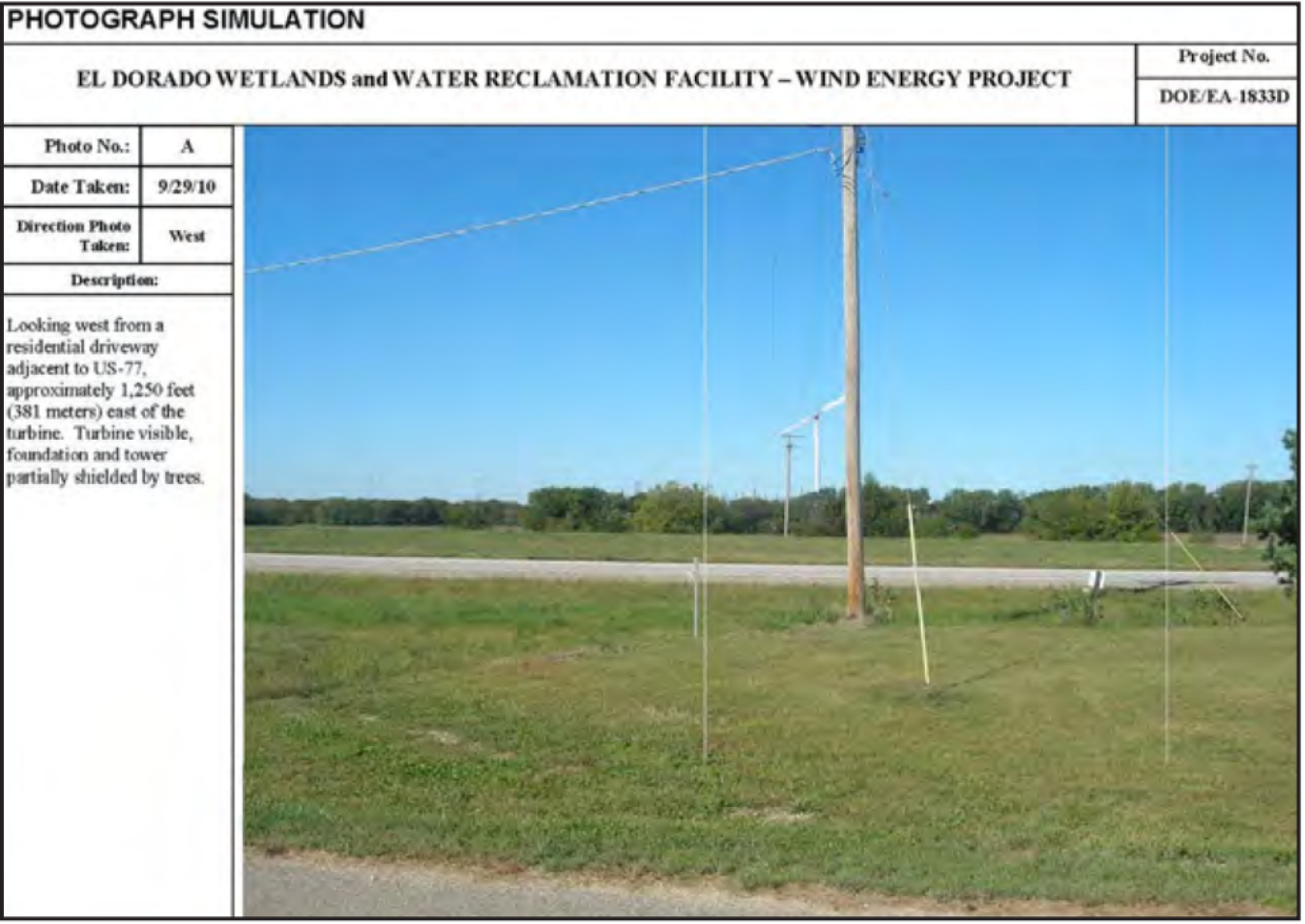Collaboration and communication resulted in an efficient EA process.
Office of NEPA Policy and Compliance
June 2, 2011
By: Amy Van Dercook, NEPA Document Manager, Golden Field Office
In a recent EA process, DOE’s Golden Field Office found that diligent planning and communication resulted in an exceptionally efficient outcome. DOE worked to complete the EA for the City of El Dorado Wind Energy Project (DOE/EA-1833; February 2011) in 5 months and on budget.
The proposed action was to authorize the expenditure of Federal funding appropriated under the American Recovery and Reinvestment Act (Recovery Act) to design, permit, and construct a 1.0-megawatt wind turbine to be located immediately west of the El Dorado Wetlands and Water Reclamation Facility in El Dorado, Kansas. The Kansas Corporation Commission was the grant recipient, with a sub-grant provided to the City of El Dorado for the construction of the wind turbine.
DOE published the Notice of Scoping in local newspapers and online at the Golden Field Office Public Reading Room and City of El Dorado websites, and sent copies to Federal, state, and local agencies; tribal governments; elected officials; businesses; and organizations and special interest groups.
Agency Involvement and Coordination. One of the challenges in completing the EA was coordination among many involved parties: DOE, the Kansas Corporation Commission, City of El Dorado, a DOE contractor, a sub-recipient NEPA contractor, and the sub-recipient’s engineering firm. From the beginning of the project, we all met weekly to discuss outstanding items. Action items were maintained in a project tracking spreadsheet and each deliverable had a set due date. This process helped all members of the team adhere to the schedule.
Floodplain Action. The El Dorado Wetlands and Water Reclamation Facility is located in the 100-year floodplain and the regulatory floodway of the Walnut River; therefore, DOE conducted a floodplain assessment pursuant to Executive Order 11988 and 10 CFR Part 1022. The proposed project would temporarily impact the floodplain/ floodway during construction of the wind turbine foundation and installation of underground electrical connections to the facility. After completion of these activities, the affected floodplain areas would be graded, seeded, and restored to their previous condition. The proposed project required a No-Rise Certification from the City Assistant Engineer to ensure that the proposed encroachment would not result in any increase in flood levels within the community during the occurrence of the base (100-year) flood event. Discussions with the City’s Assistant Engineer during the development of the final EA indicated that, based on the information available for the proposed project, no adverse effects regarding floodplain issues or the issuance of a No-Rise Certification were anticipated.
Air Navigation Impacts. The Federal Aviation Administration (FAA) presumed hazard to air navigation in its initial aeronautical study. FAA indicated that a favorable determination could be made if the proposed structure height was reduced to 306 feet above ground level or if FAA performed additional studies for the original proposed tower height (330 feet). The City of El Dorado requested that FAA perform the additional study of the original tower height. FAA performed the requested study and subsequently issued a “Determination of No Hazard to Air Navigation” letter to the City of El Dorado. The FAA determination was subject to review if an interested party filed a petition, but no petitions were received and the determination became final on January 10, 2011.
For more information, contact Amy Van Dercook at amy.vandercook@go.doe.gov or 720-356-1666.

